Salmon and rice with a flavor packed Asian sauce that's so easy to make. Serve these flaky fillets with pre-cooked rice and you have dinner made in no time at all!
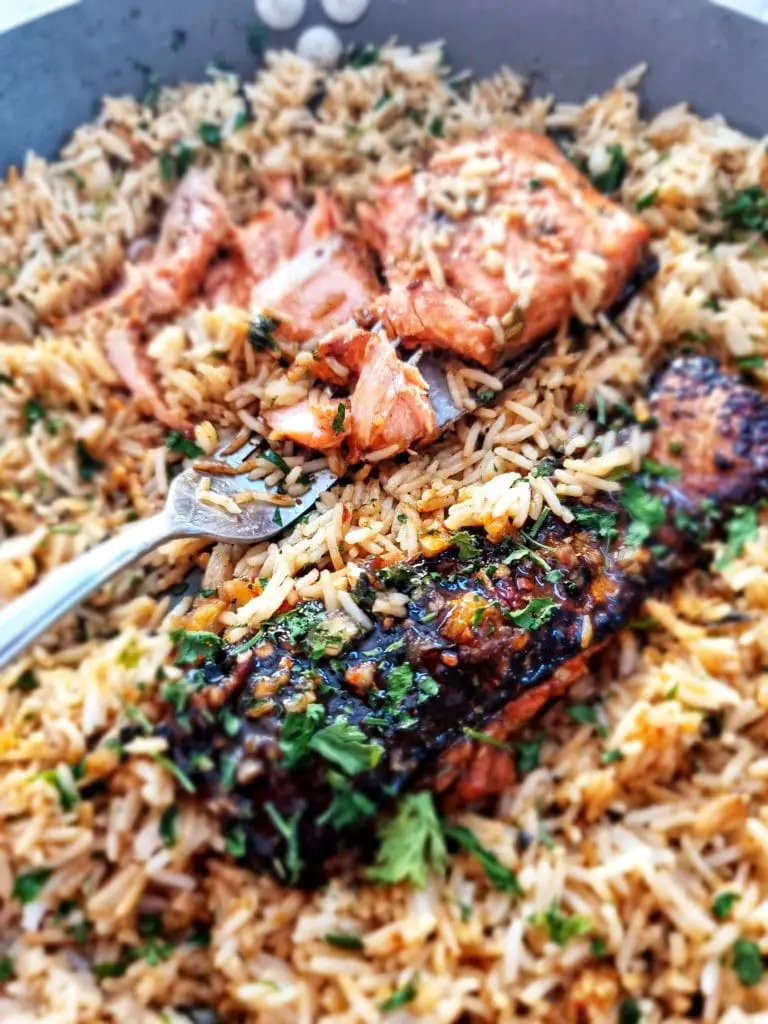
In love with this recipe, it's quick, easy and a great idea for one of those weeknight dinners or weekend lunches. Next time you have salmon, remember this flavor packed Asian salmon and rice that's warmed up in butter and anything that's left over in the pan! My kind of meal and I hope yours too!
The sauce is made with pantry staples and you can find the ingredients at most supermarkets and your local Asian store.
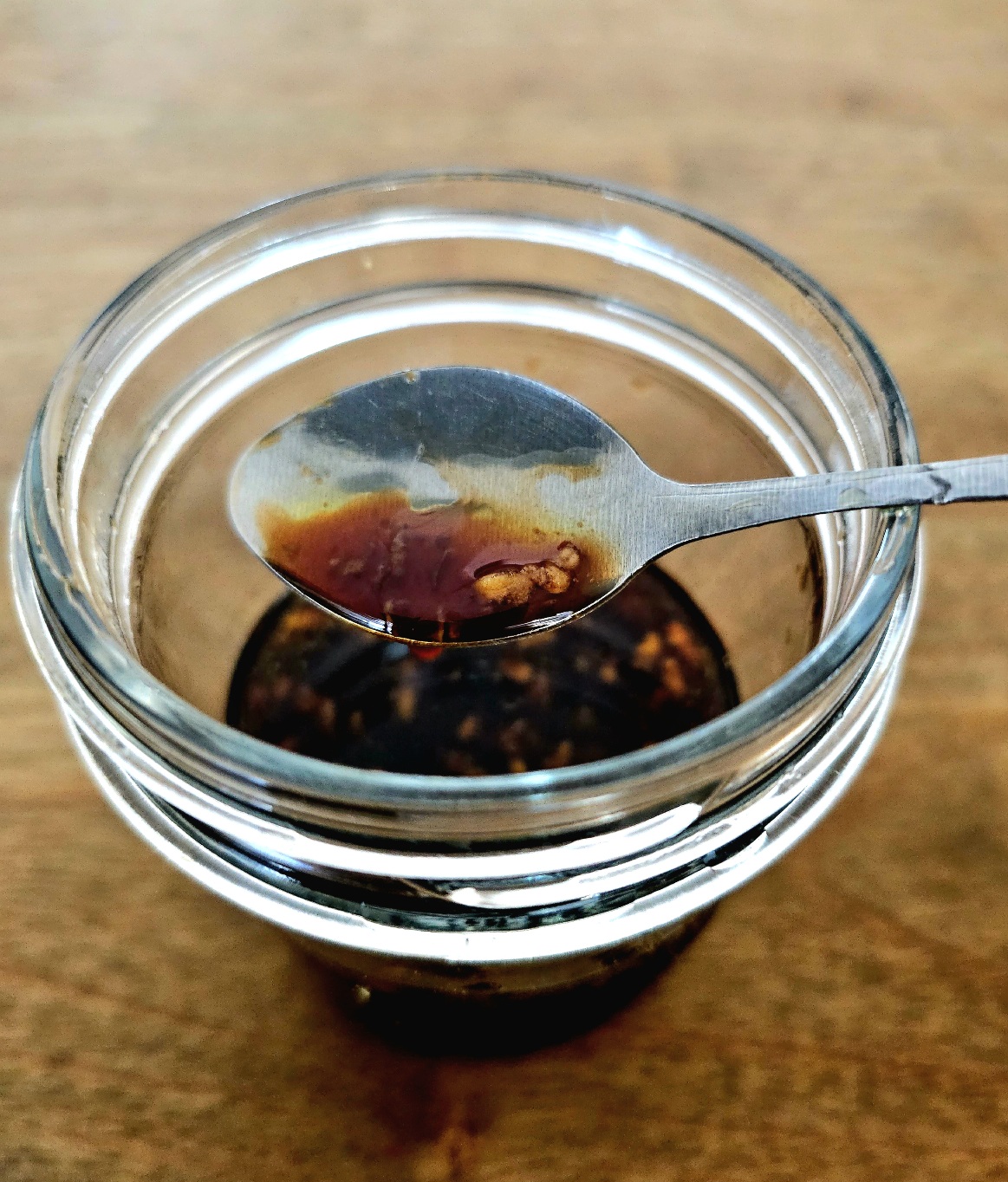
What could be better than salmon? Another salmon meal - unless we're talking about these addictively delicious Steak Nibbles that you all loved on my Instagram. Also quick and easy.
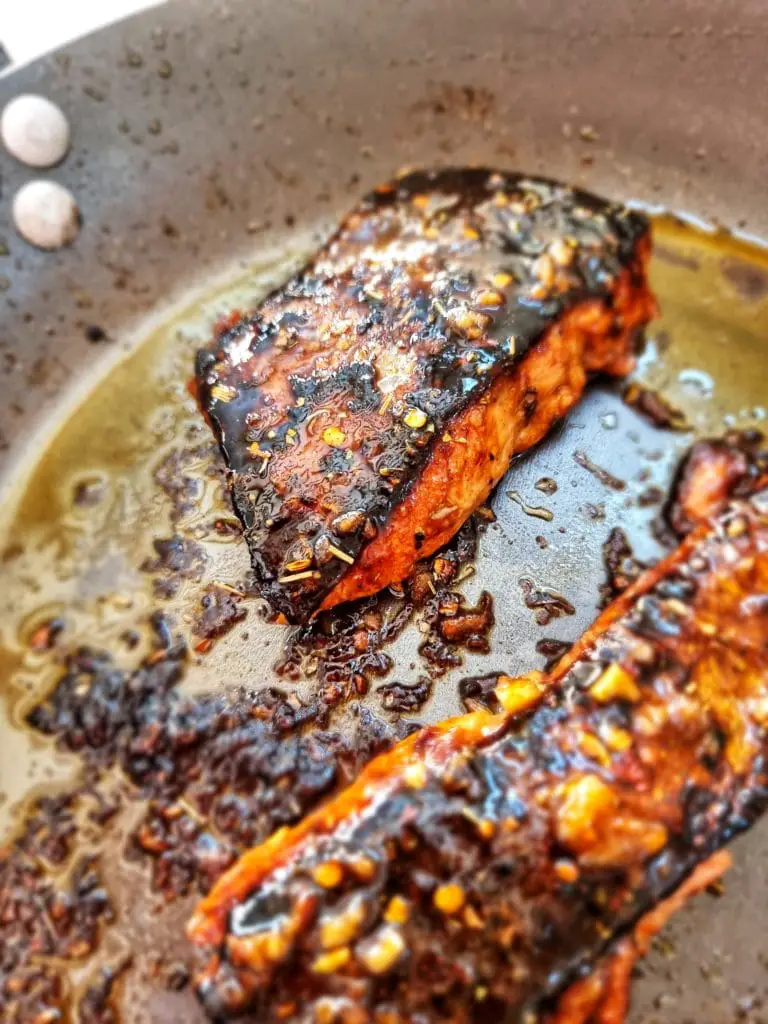
I want to take you through this less than 30 minutes recipe and I would love it if you actually tried it so that you can see how easy it is to make. Not only easy but even if I took this whole post to tell you how delicious this food was I would never be able to give sufficient justice to the real life taste. Not even the pictures will suffice, it was so much better!
I know that because when my husband tasted the rice and then said 'the rice is really good can I finish it?' I had a happy smile because it was confirmed that I was not alone in my world of deliciousness????

Salmon and Rice Ingredients
Salmon: Fresh salmon fillets or trout.
Olive oil: This extra virgin olive oil is what I suggest for a high quality oil. You are cooking on medium to high heat not high so olive oil works great.
Sauce ingredients: This is my Asian sauce recipe (in the recipe card below) for the tastiest crusted salmon that you will ever eat!
Basmati rice: You can use any rice that you prefer and cooking it advance is always a great option. You can also buy a range of microwaveable rice options if you are short on time to make your own. This cooked basmati rice takes 30 to 40 seconds to reheat after tossing it into the same pan that the salmon was pan fried in.
White wine: We used a white dry wine to enhance and finally pull all the flavors together but this is also optional.
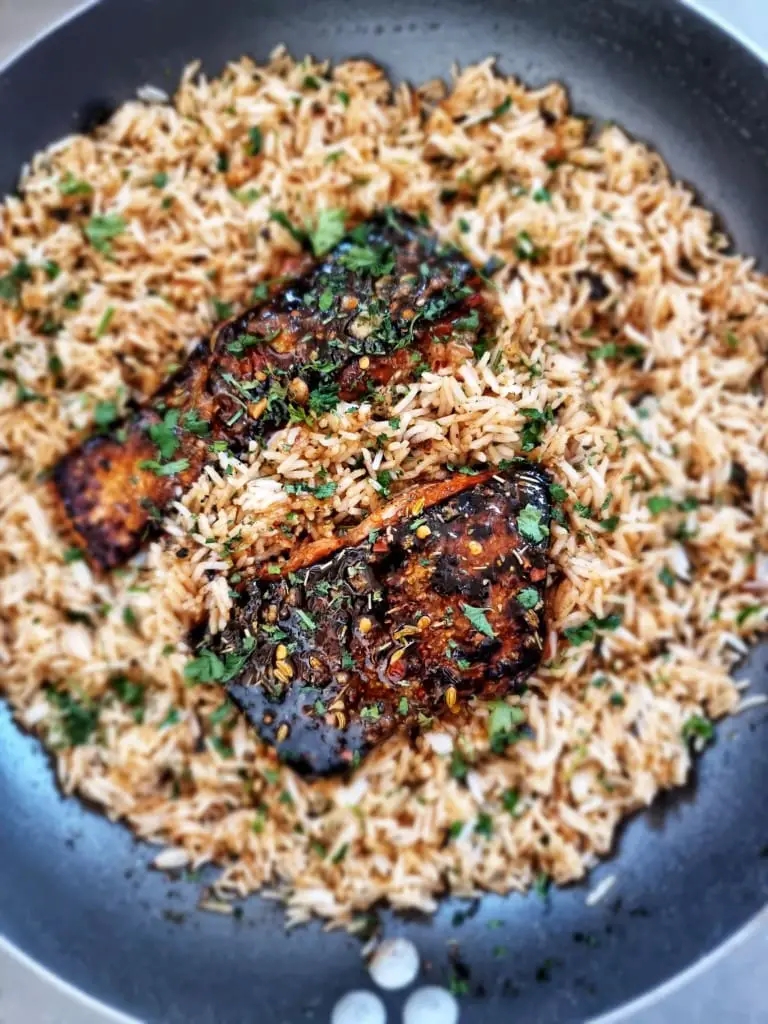
How To Cook Salmon and Rice
You can also watch a quick video on how to make this salmon and rice with with sauce. The full recipe can be found in the recipe card below.
Prep the salmon: First things first, take the salmon out the fridge 15 minutes before cooking. Make sure the salmon fillets are dry so use kitchen tissue paper roll or a clean dish towel. Either way dry the salmon or it won't crisp up nicely.
Make the sauce/marinade: Combine all the sauce ingredients. Set aside in a flat bowl or plate, something with sides so the sauce doesn't spill.
Cook the rice: Cook the rice and I have a how to cook basmati rice recipe here or prep your microwave or other store bought rice.
Preheat the pan: Heat the oil in a skillet or non stick pan and add the fillets.
Season/Cook the salmon: Place the salmon fillets into the sauce making sure it soaks up the sauce. Use a spoon to scoop the sauce over the fillets. Your pan should now be hot, place the fillets skin side down into the pan (away from you) see the FAQ's if you don't know what that means. Cook the salmon until the skin is crisp and darkened, this takes about 5 minutes depending on the stove. Turn it over and use a spoon to scoop the sauce over the top. The salmon will cook longer on the first side than on the skinless side, don't overcook it.
Combine: Remove the salmon, add a 'knob' of butter (about a tablespoon) to melt and add the cooked rice. Mix the rice into the melted butter and left over pan bits from the salmon which come from the sauce.
Serve: Return the salmon to the pan, place over the rice. In the remaining sauce, add a dash (tablespoon) of white wine (optional) mix and pour over the salmon. Serve with fresh herbs.
Cook's Tips
Cooking and Stove Temp: Once the salmon is in the pan, your next business will be turn it when it's ready and not before! Don't be fiddling with the fillets, like most things they cook well on their own. As long as the heat has been lowered slightly they wont burn. I like to cook them on medium to high heat (more high and less medium in the beginning) and then I drop it halfway through. The medium to high heat is just to get that browning on the skin done.
Rice: The rice is added to the pan after the salmon, using up any and all the pan juices and bits of marinade left. Feel free to serve your rice plain without adding it to the pan, but be warned that it will not have all the flavor!
Check the salmon: Use a pair of tongs to gently lift the salmon and 'peep' in to see if the crust has a good crisp skin before turning.
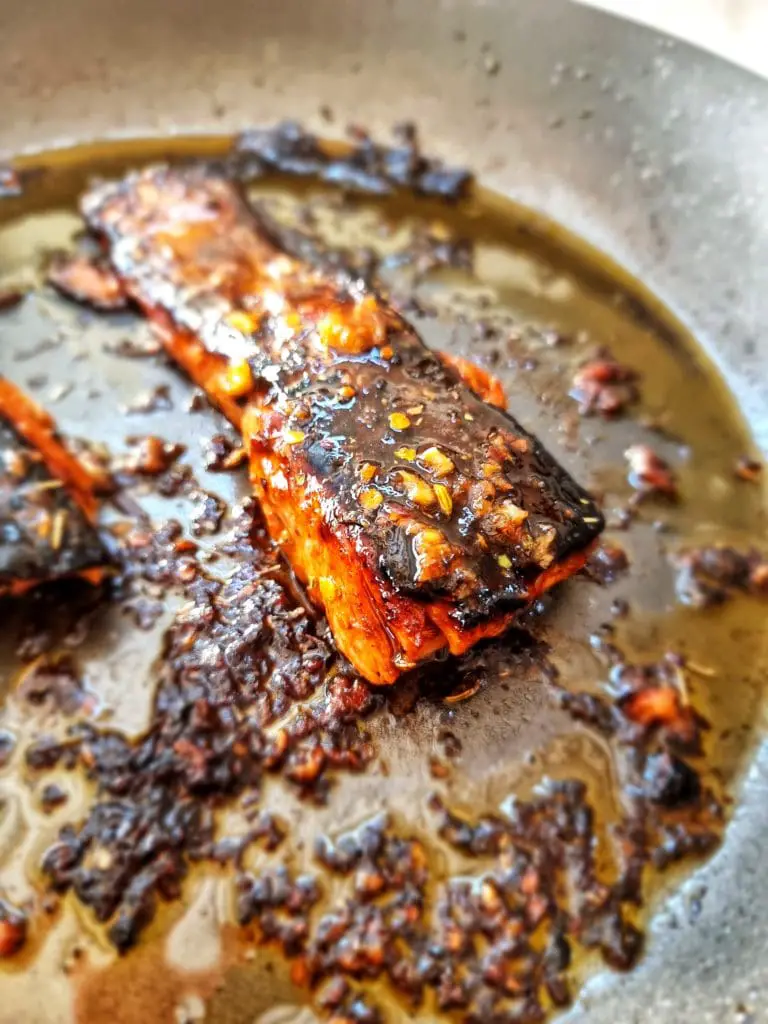
For me this is one of those trusting the process - which is king of life even in food. If you follow the above steps which are pretty basic your salmon will be crispy on the outside and perfectly flaky on the inside. Talk about igniting those taste buds! If you are also anosmic or know someone who is, then share this recipe with them, it might just be the thing!
A quick recap:
- Room temperature salmon
- Towel/kitchen tissue dry
- Sauce and seasoning
- Heat Oil
- Cook
- Don't touch and fiddle
- Turn
Salmon is often paired with salad or a side vegetable like green beans or artichoke and as wonderful is that is I was in the mood for something soulful, flavorful and satisfying. What's new?
Would you like to save this?
I'd like to receive tips & recipes from Anosmic Kitchen.
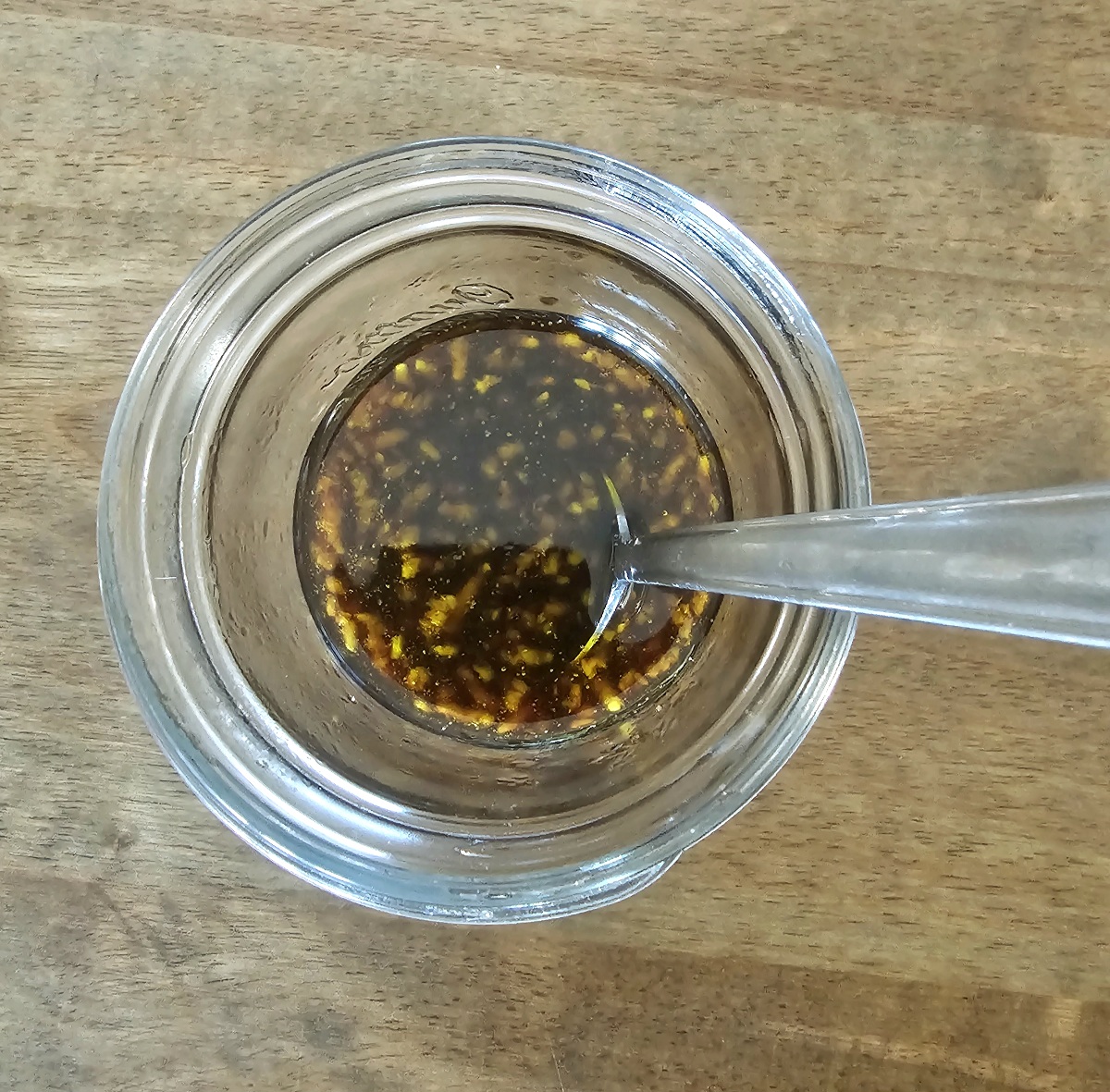
How and Why Make The Sauce
You want to make this sauce because it gave the salmon and the rice so much umami flavor it's ridiculously good! That and you can use can this sauce for so much else like vegetables, chicken, baked potato and all your stir-fry recipes!
More Easy Sauce Recipes
- Creamy Mushroom Sauce
- Romesca Sauce
- Beef Stir-Fry Sauce
- Homemade Cranberry Sauce
- How To Make Béchamel Sauce
- Chicken Breast Recipe in an Asian Inspired Sauce
- Easy Braai Sauce Recipe
FAQ's For Salmon and Rice Recipe
How to choose fresh salmon when buying
Checking the color of salmon when purchasing helps confirm that it's fresh. Fresh salmon is bright orange color and if you gently press it, it will bounce back. You cannot press salmon when buying it, (you shouldn't it) so focus on the color and smell.
Cooking salmon
Although it's easy to cook salmon it can also go horribly wrong and nobody wants that especially when pay a hefty price! The idea is to cook it till done but don't overcook it so follow the full recipe card below for a guide. I love using individual salmon fillets so would suggest using that as opposed to one large piece it makes for easier cooking and handling.
Which side to cook the salmon first?
This recipe, we cook the salmon on the skin side down first for two reasons:
- We want a nice slightly charred crisp skin and a hot pan will give us that. The contact of the skin and hot pan immediately crisps the skin.
- The second reason is that cooking salmon skin side down, allows us to cook the salmon longer protecting the top from overcooking.
Why is room temperature salmon important?
Removing salmon from the fridge 10 to 15 minutes before cooking it, avoids the salmon going from cold to a hot pan. The disadvantages to not taking it out to reach room temperature are that it doesn't cook evenly. The impact of cold to a hot pan, can make it shrink and become hard and/or rubbery.
Don't leave the salmon out for too long because then it becomes a food safety issue.
How do you check if salmon is safe to eat?
The color. Check the expiry date as you should with everything but mainly fish and chicken, and then for salmon, the color, It needs to be bright and fresh, you can see salmon that's just below par by that pale sort of maybe pink? Not that one.
Seasoning and Spices Over Salmon
Watch your salt intake when using salty marinades. This recipe uses a homemade marinade which the ingredients already have salty elements and sodium. Check the sodium in the ingredients, make sure to use low sodium soy for example like the Kikkoman's brand. You should always taste as you cook.
Spices
We all know that a classic delicious salmon is best left plain, salt pepper, olive oil and perhaps a squeeze of fresh lemon. However, spices elevate food, period, like marinades. Using a light marinade or spice on the occasion, provides a different experience. Spices add flavor, color, aroma and a change is as good as a holiday. We use these spices.
Hoisin Sauce vs Oyster Sauce - What's the difference?
The difference between hoisin and oyster sauces lies in the taste. The texture is similar since they are both thick sauces however, one is made from oyster extract (oyster sauce) and hoisin is fermented soy bean paste. The thing to remember is that oyster sauce has a salty taste (like the ocean?) and hoisin has more of a umami taste with the sweet, fragrant spices that come through.
Can I make my own hoisin sauce?
Yes you can combine soy sauce, honey (or maple syrup for vegan option), apple cider or rice wine vinegar (you can even use fresh lemon juice), sesame oil, minced garlic and spices. Use measurements of a teaspoon to a tablespoon and taste as as go. For the spices, go for warm ones like cinnamon, star anise and fennel or use the Chinese five spice.
How long does salmon stay fresh?
Its always best to use salmon the same day that you buy it, so check the expiry date before purchasing if you are not planning to use it immediately. If you don't use it within 48 hours, you really should be freezing it.
More Salmon Recipes
- Fennel Air Fryer Salmon
- Oven Baked Healthy Salmon Recipe
- Spicy Salmon Recipe
- Mediterranean Salmon Salad
- Pan Seared Salmon
Prefer to watch? Visit my YouTube channel to watch this salmon and rice recipe!
Salmon And Rice
Ingredients
- Cooked Rice
- 2 Salmon fillets skin on
- 2 tablespoons Extra virgin olive oil or canola oil
- 8 th tsp pinch salt & pepper (consider the sodium in soy when adding salt so perhaps add later if not sure)
Sauce
- 2 tablespoons soy sauce
- 1 garlic clove minced
- ½ teaspoon grated ginger
- 2 tablespoons oyster sauce or hoisin sauce
- 1 teaspoon fish sauce
- 1 tablespoons olive oil or 1 tablespoon sesame oil
- 1 teaspoon rice vinegar
- 2 tablespoons honey
- ½ teaspoons Calabrese spice
To Flavor the Rice
- 1 tablespoon unsalted butter
- pinch of salt & pepper
Instructions
- Prep the salmon: Remove the salmon fillets from the fridge 10 to 15 minutes before you start cooking them. Dry them with a kitchen towel/tissue paper.
- Make the sauce: Meanwhile add all the ingredients for the sauce into a bowl including the Calabrese spice. Mix and set aside.
- Season the salmon: With salt and pepper but taste as you go and consider the sodium in the soy sauce.
- Preheat the pan: Heat a skillet or non stick pan over medium to high heat, add the oil to heat until it's hot. Tilt the pan slightly to coat the entire base of the pan and make sure the oil is hot before you add the salmon.
- 10 second marinade: Meanwhile, dip the salmon fillet into the sauce and make sure that they're well coated in the sauce. Turn them over and use a spoon to scoop the marinade all over the salmon, both sides.
- Cook the salmon: To test if the oil is ready, hold the fillet in one hand and dip the edges into the pan, if you don't hear a sizzle it's not ready. Once it's hot, it will sizzle then gently lay your salmon fillets down (away from you) one at a time with the skin side down. Once that's done, leave them alone to cook. Don't fiddle or touch. Pour some of the remaining sauce over the salmon as it cooks and be sure to leave some for serving!!
- Cooking Doneness: Depending on how thick your salmon is will determine the time. These were smaller fillets and took about 4 to 5 minutes on the crust. Point is let is cook until you get that brown crust on the bottom. You will also see the color change on the side to a lighter color and this helps determine when it's done.It cooks longer on the crust side down so even another minute is fine then gently turn it over and cook it for a minute or 2 on the opposite side. Again, it will be longer if your salmon is thicker.
- Rest the salmon At this point I turn the heat off and leave it in the pan for a minute, minute and a half before moving it onto a plate to rest.Warm & flavor up the cooked rice: Same pan, add the butter and scrape the bits off the pan into the butter.
- Warm & flavor up the cooked rice: Same pan, add the butter and scrape the bits off the pan into the butter.
- Combine: Add cooked rice, stir and mix as you collect the butter and any flavor bits from the salmon until its well combined.Return the salmon and drizzle the remaining sauceAdd the white wine to the remaining sauce, return the salmon and place over the rice and drizzle the sauce over the salmon before serving.


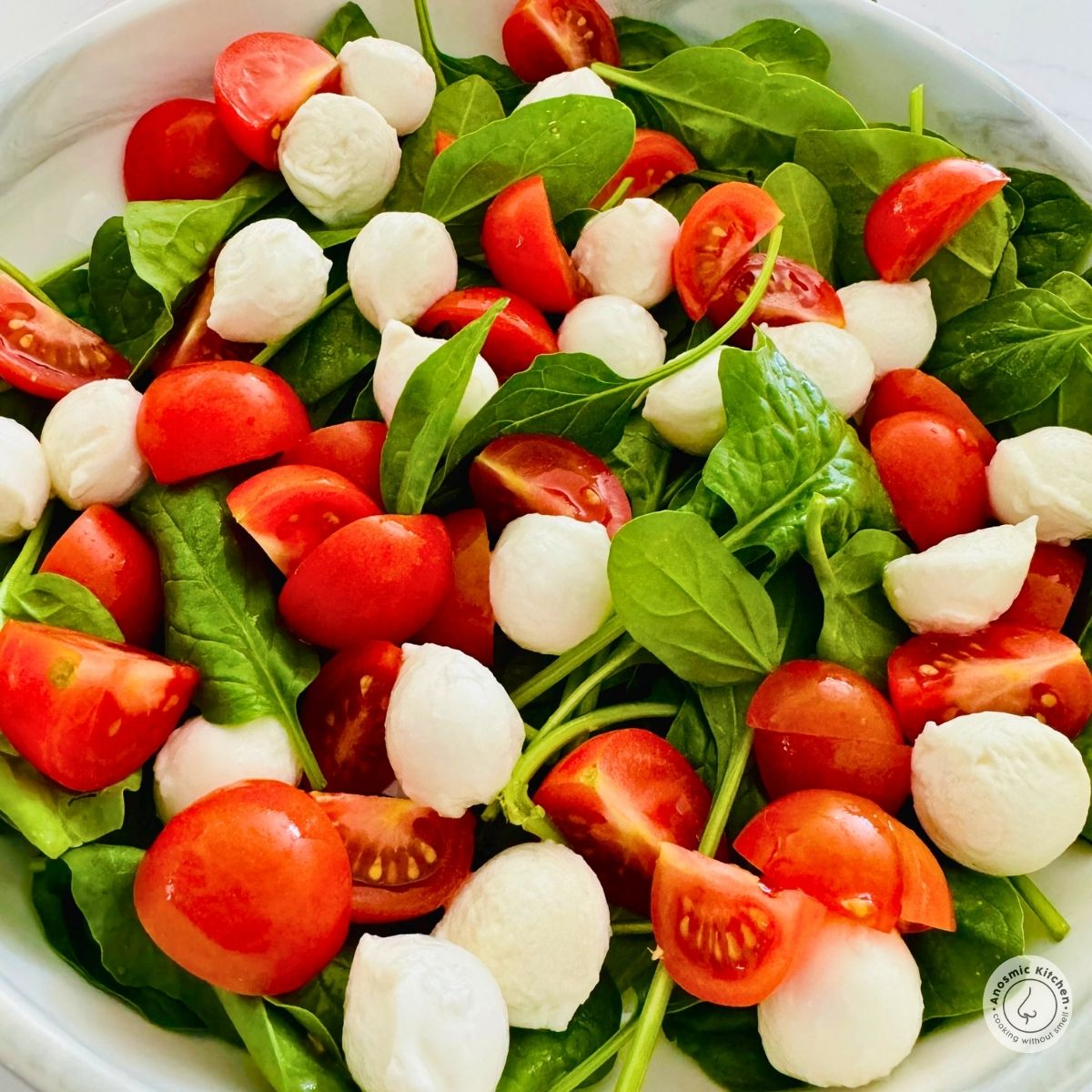

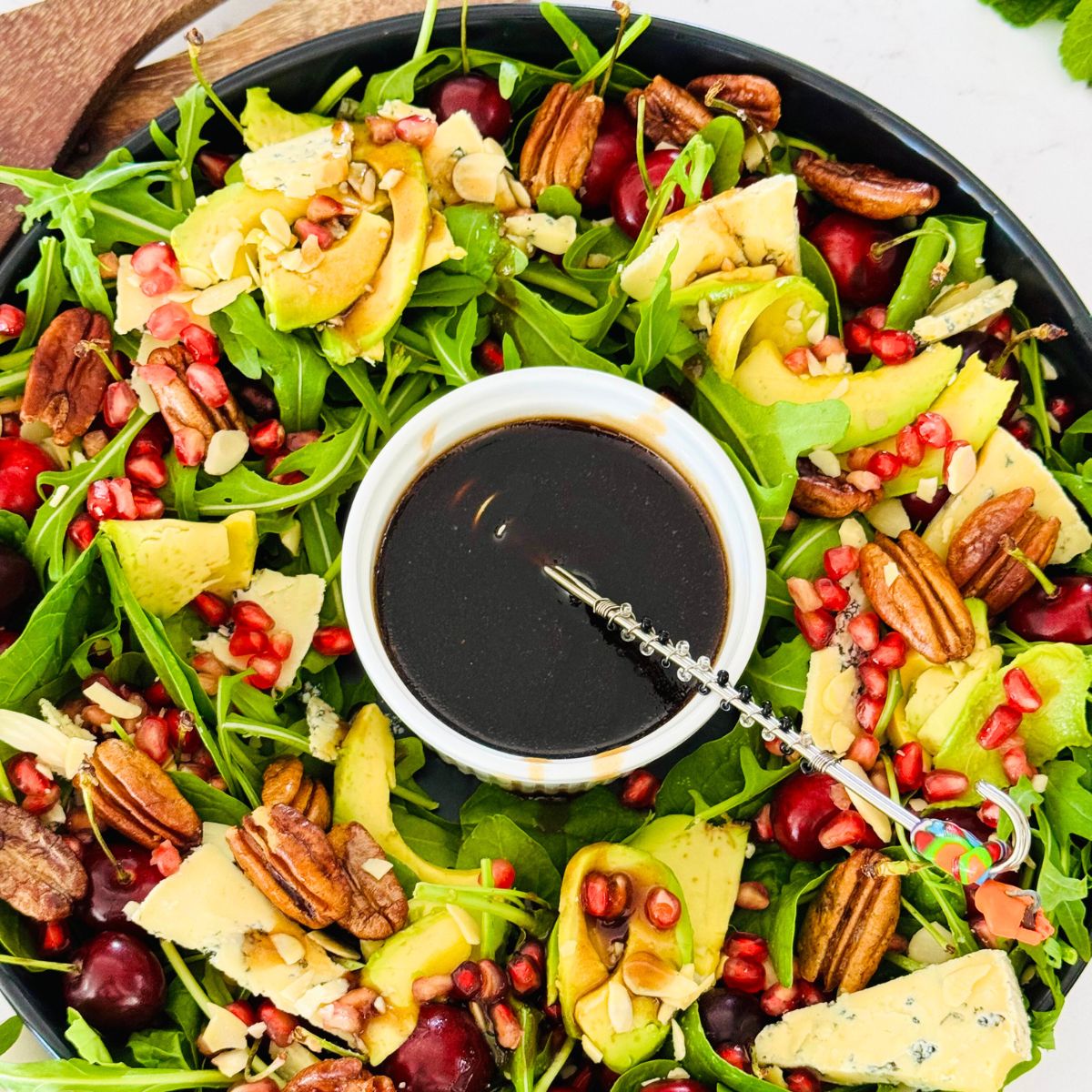
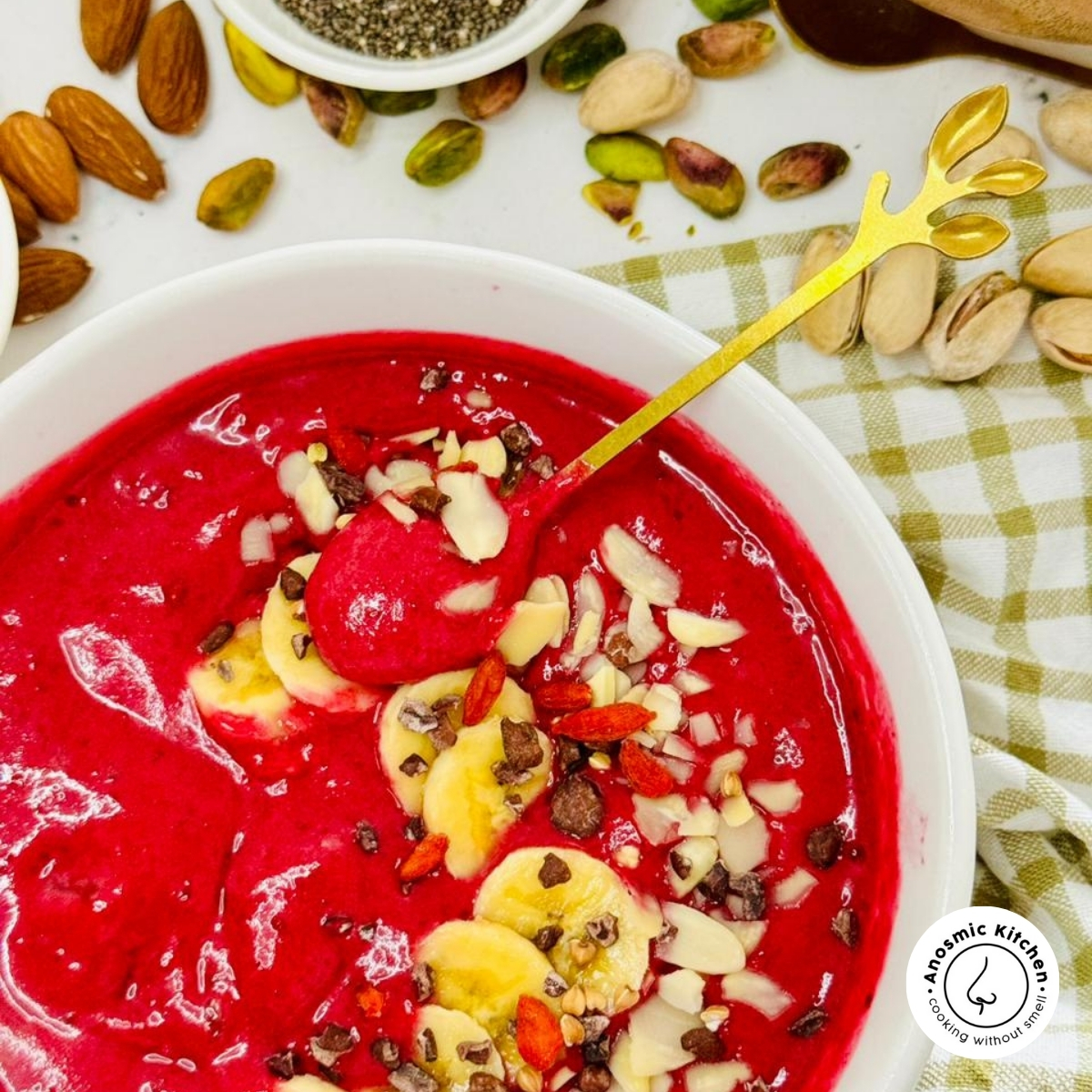
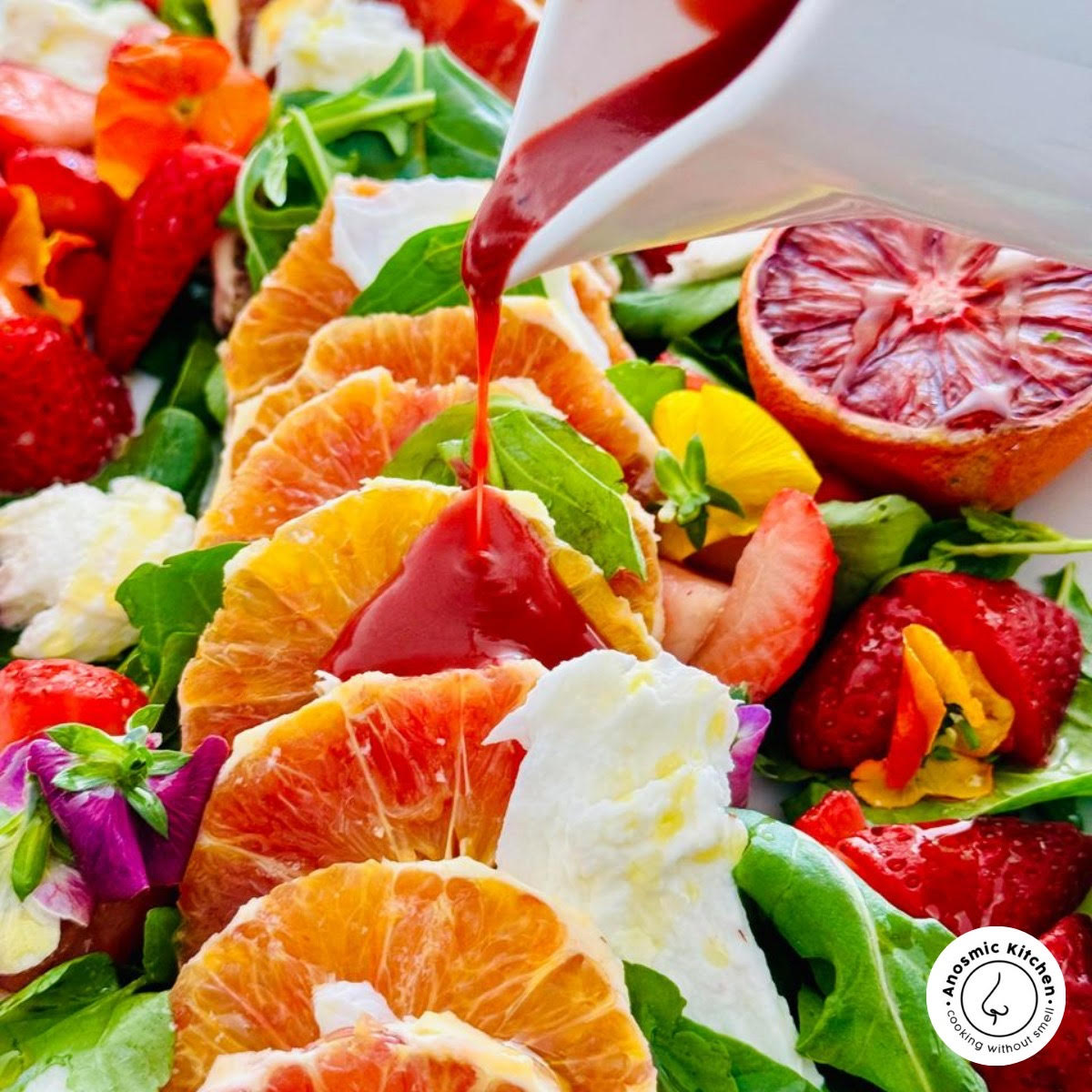
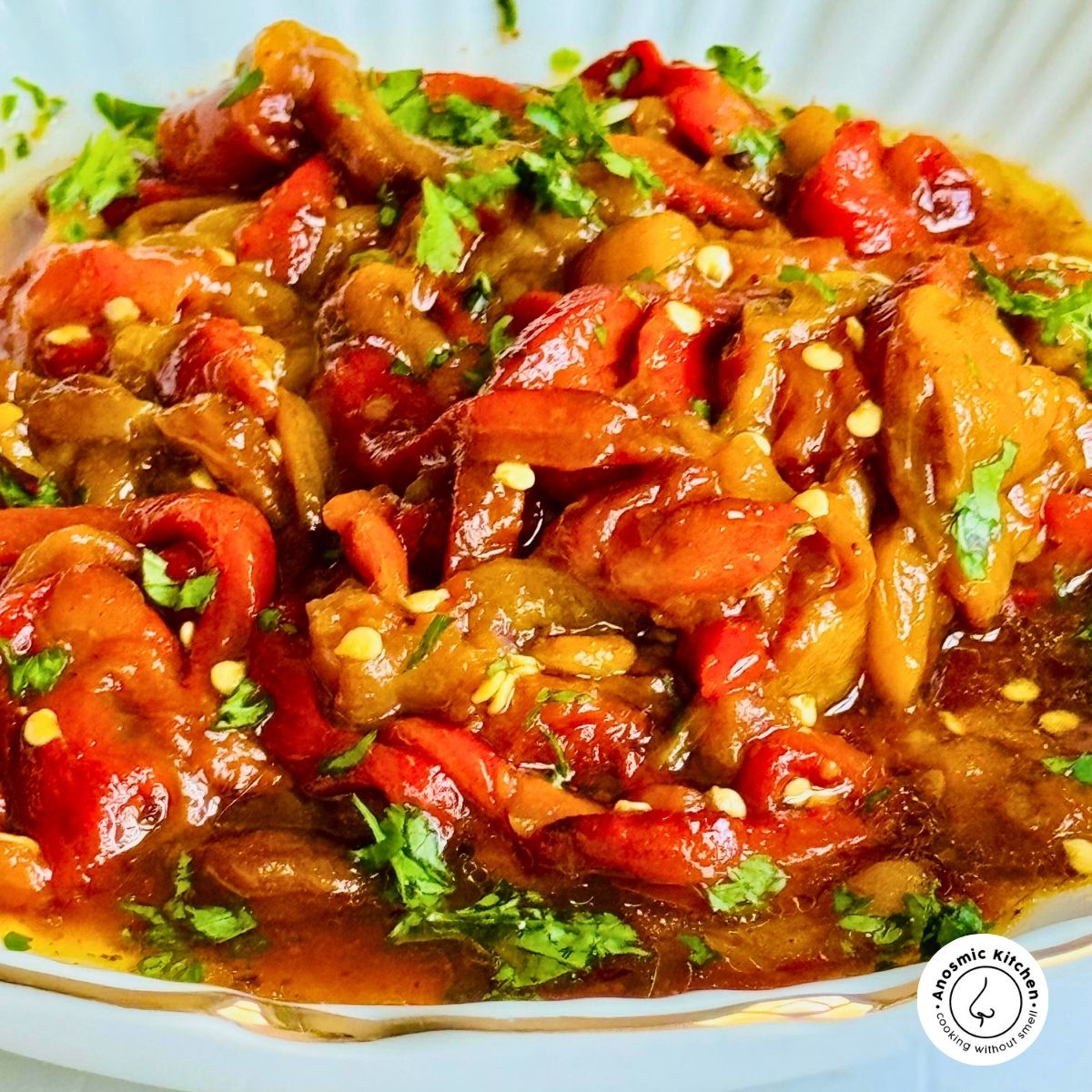
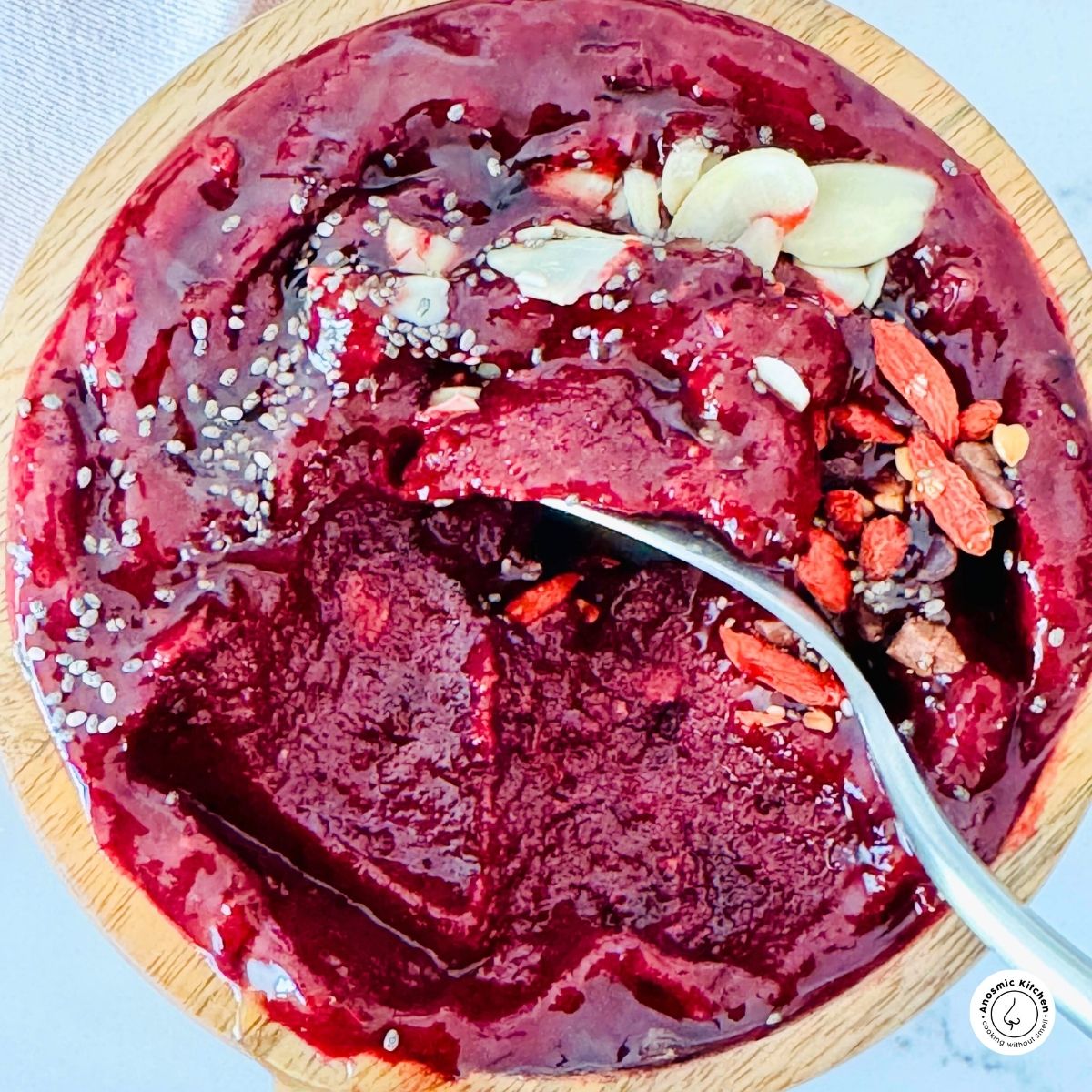

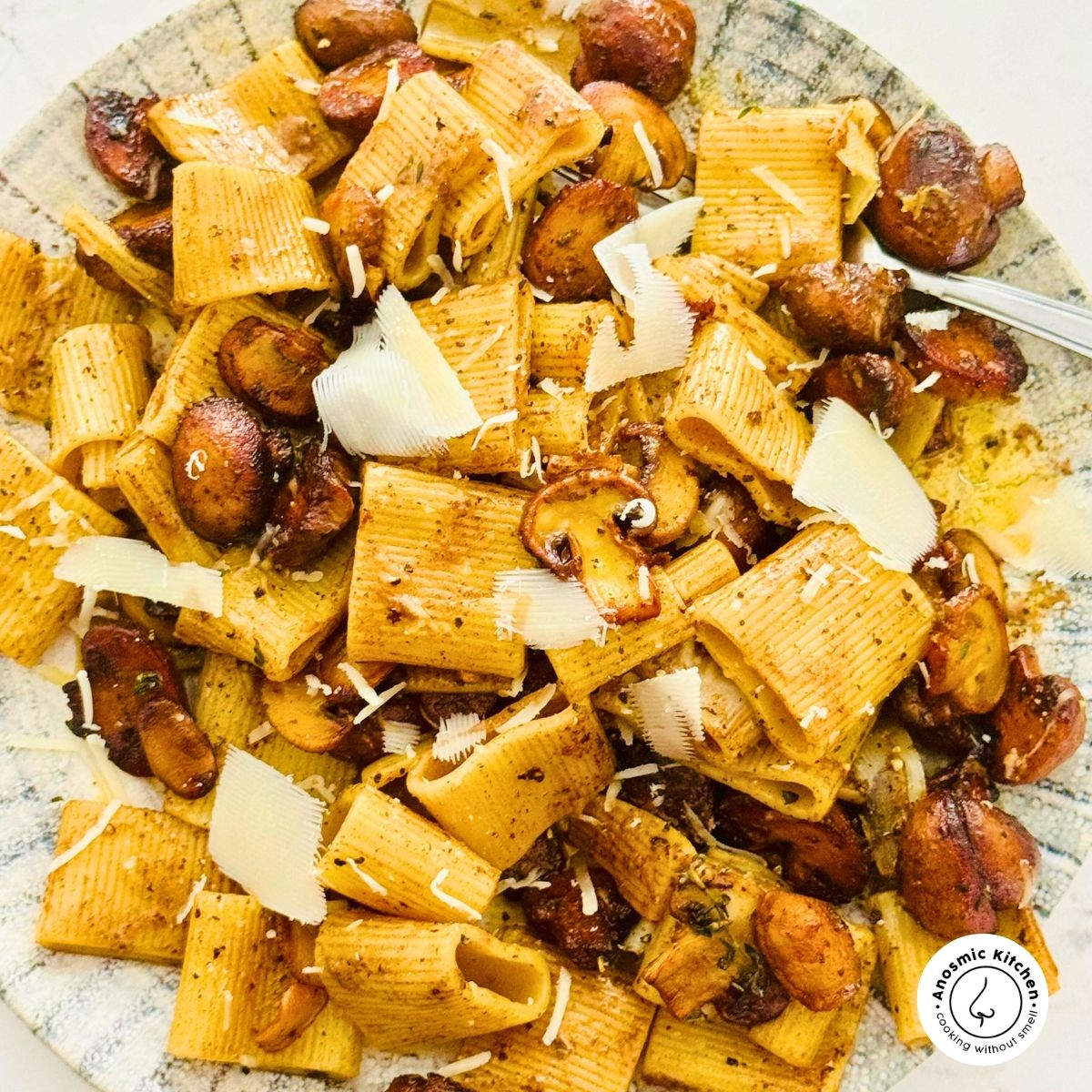
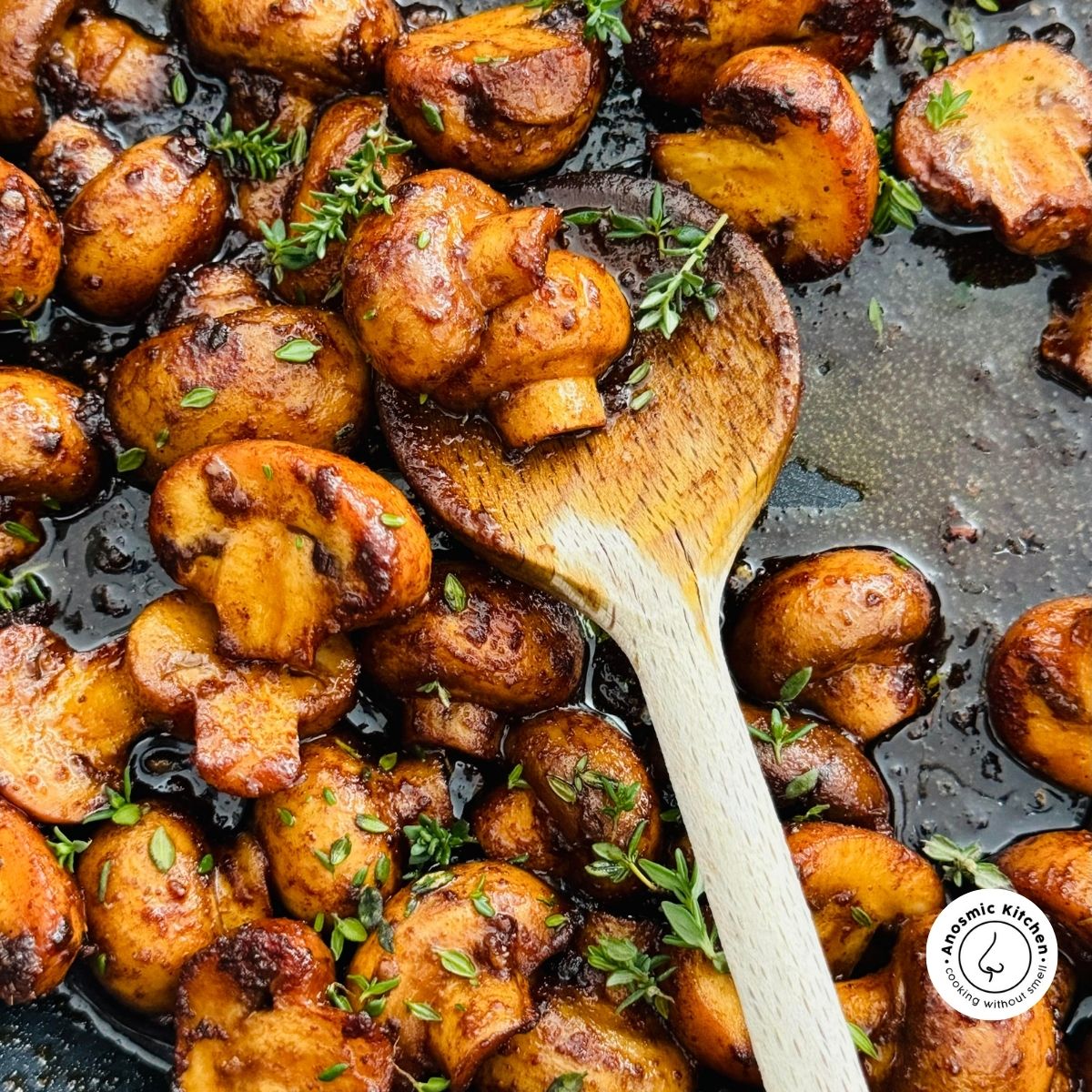
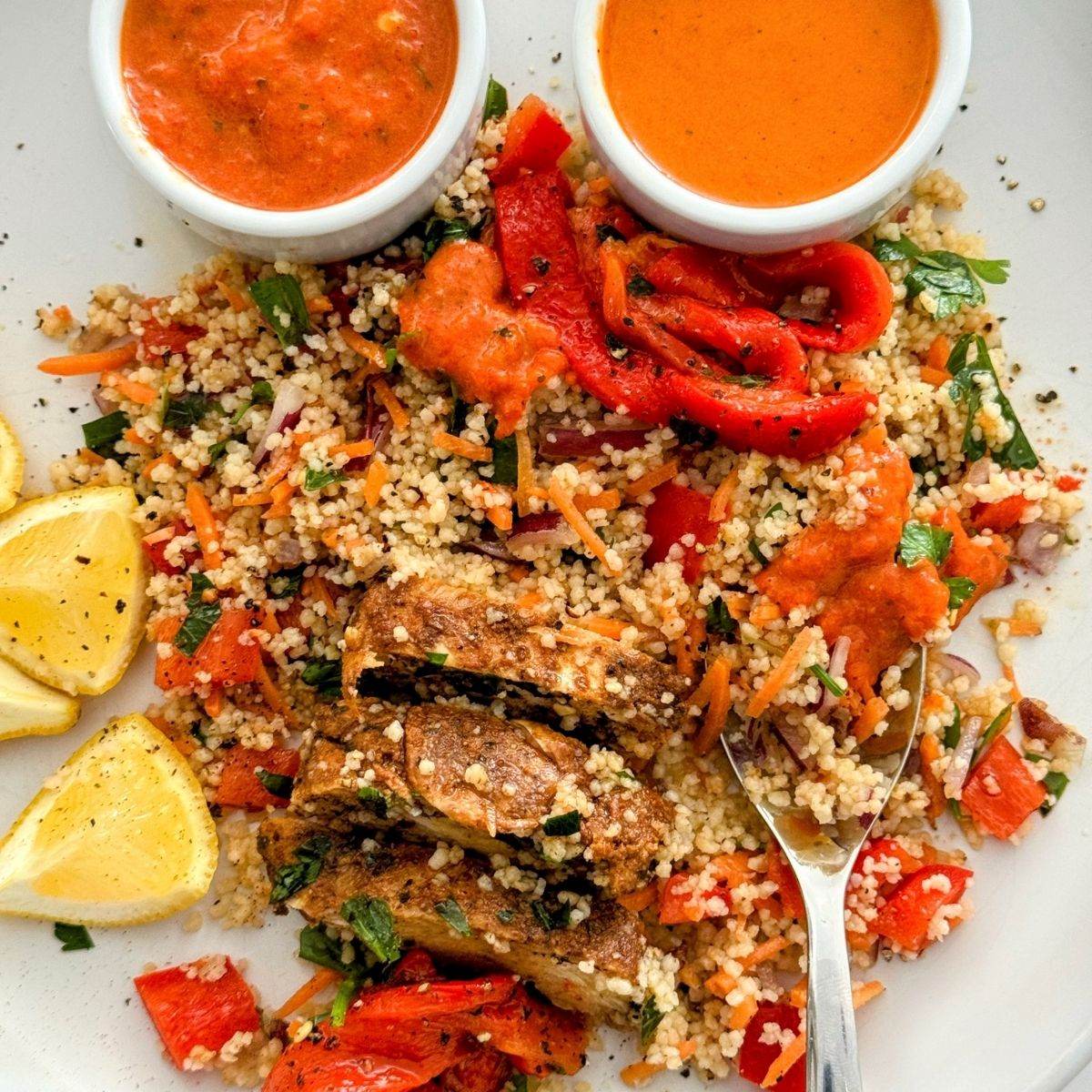
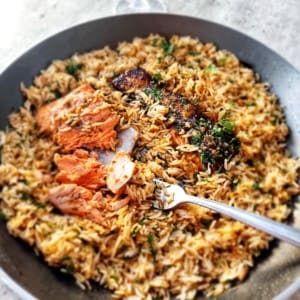
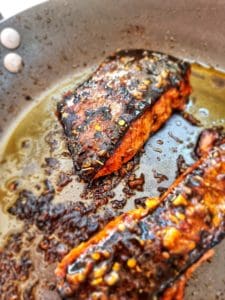
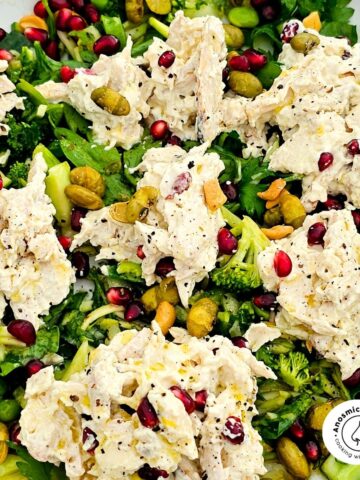
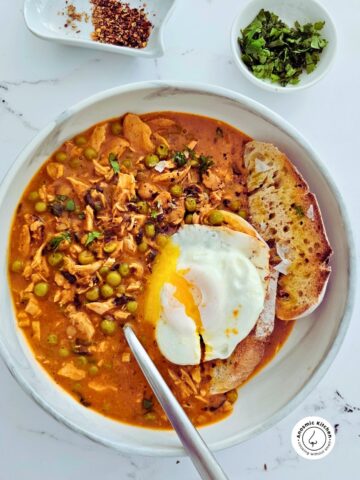
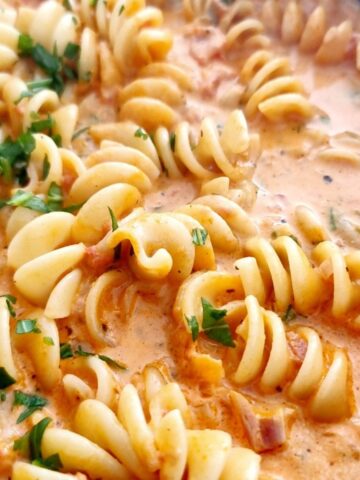
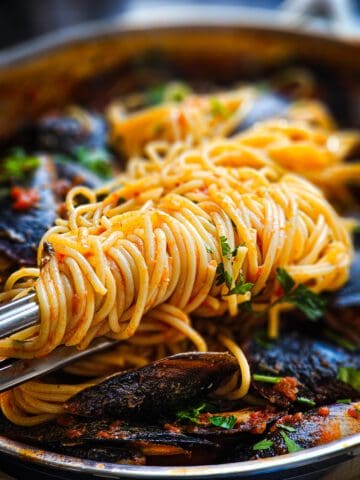
Comments
No Comments